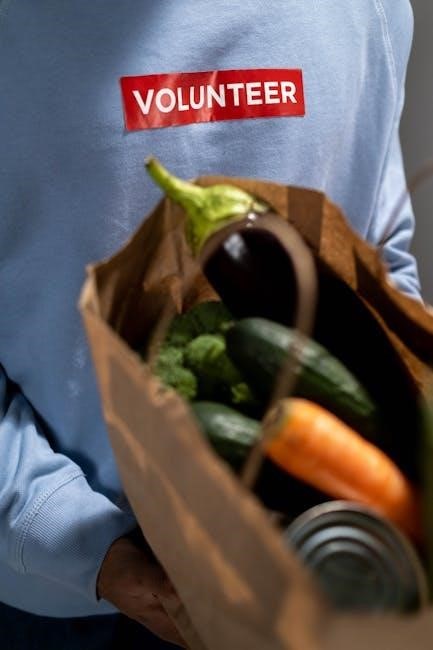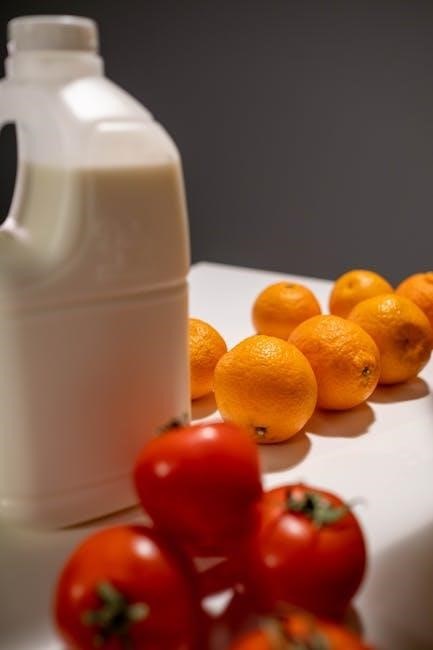Pretzels are a beloved snack with a rich history, dating back to European monks in the 6th or 7th century. These twisted treats became a staple in German and American cuisine, enjoyed in both soft and hard forms. Their unique shape and savory flavor have made them a cultural favorite, perfect for snacking, Pairing with dips, or celebrating special occasions like National Pretzel Day.
1.1 Brief History of Pretzels
Pretzels trace their origins to European monks in the 6th or 7th century, initially used as a reward for children who prayed. The name “pretzel” comes from the Latin “bracellae,” meaning “little arms,” reflecting their twisted shape. Early pretzels were simple dough loops, symbolizing prayer or luck. As German immigrants brought pretzels to America, they became a cultural staple, with Pennsylvania producing 80% of the nation’s pretzels. Over time, pretzels evolved into soft and hard varieties, celebrated during events like National Pretzel Day on April 26. Their enduring appeal lies in their versatility and rich history, making them a beloved snack worldwide.
1.2 Types of Pretzels (Soft vs. Hard Pretzels)
Pretzels come in two main forms: soft and hard. Soft pretzels are chewy, fresh, and often topped with salt or other seasonings, making them a popular snack at events. They require immediate consumption for optimal flavor. Hard pretzels, on the other hand, are crunchy, dry, and durable, with a longer shelf life. They come in various shapes, such as rods or twists, and are ideal for snacking or pairing with dips. Both types have gained widespread popularity, with Pennsylvania producing 80% of America’s pretzels, showcasing their enduring appeal and versatility in texture and flavor.

Ingredients and Equipment Needed
Essential ingredients include flour, yeast, water, sugar, and salt. Equipment like mixing bowls, baking sheets, and a stand mixer or hand tools are necessary for preparation.
2.1 Essential Ingredients for Soft Pretzels
The key ingredients for making soft pretzels include high-protein flour, active dry yeast, warm water, sugar, and salt. Additional ingredients like unsalted butter or oil enhance flavor and texture. Yeast is activated with warm water and sugar to initiate fermentation, while flour provides structure. Salt balances sweetness and enhances flavor. Optional toppings such as coarse salt, sesame seeds, or melted butter can be added for extra taste. Some recipes incorporate baking soda for the boiling step, contributing to the pretzels’ signature crust and chewiness. These simple, pantry-friendly ingredients come together to create a delicious, authentic soft pretzel.
2.2 Baking Tools and Equipment
To make soft pretzels, you’ll need a stand mixer or a large bowl for mixing and kneading the dough. A lightly floured work surface is essential for kneading. Baking sheets lined with parchment paper or silicone mats are required for baking. A large pot is necessary for boiling the pretzels in a baking soda solution, and a slotted spoon helps transfer them to the baking sheets. Optional tools include a pastry brush for egg wash and a cooling rack for cooling the pretzels. These tools ensure the dough is prepared and baked properly, resulting in soft, chewy pretzels with a golden crust.
Making Pretzels Step-by-Step
Activate yeast, mix dough, knead until smooth, let rise, shape into twists, boil in baking soda solution, bake until golden. Easy, delicious, and fun to create!
3.1 Activating the Yeast
Start by activating the yeast, a crucial step for fermentation. In a bowl, combine warm water (not hot) with yeast and a pinch of sugar. Stir gently and let it sit for 5-10 minutes until frothy and bubbly. This ensures the yeast is active and ready to leaven the dough. If using active dry yeast, this step is essential before mixing with other ingredients. Avoid overheating the water, as it can kill the yeast. Once frothy, the mixture is ready to be incorporated into the dough, providing the necessary rise for soft, chewy pretzels.
3.2 Preparing the Dough
After activating the yeast, combine flour, salt, sugar, and melted butter or oil in a large mixing bowl. Add the yeast mixture and mix until a dough forms. Use a stand mixer with a dough hook or knead by hand until smooth and elastic. This step ensures the dough develops gluten, essential for chewy pretzels. Avoid overmixing to keep the dough tender. Once combined, the dough should be cohesive and slightly sticky, with a shiny appearance. Proper mixing ensures even distribution of ingredients and sets the foundation for the pretzels’ texture and rise.
3.3 Kneading the Dough
Kneading the dough is a crucial step to develop gluten, ensuring the pretzels’ chewy texture. Using a stand mixer with a dough hook or kneading by hand, work the dough for 10-15 minutes until smooth and elastic. If using a mixer, set it to medium speed. For hand kneading, place the dough on a lightly floured surface and press, fold, and rotate repeatedly. The dough should become shiny and firm, with a slightly springy feel. Avoid over-kneading, as it can make the dough dense. Proper kneading ensures the dough rises evenly and forms the desired pretzel shape later.
3;4 Letting the Dough Rise
After kneading, place the dough in a lightly oiled bowl, turning it to coat evenly. Cover with plastic wrap or a damp towel. Let it rise in a warm, draft-free area for about 1 hour, or until doubled in size. This step allows the yeast to ferment, developing the pretzels’ flavor and texture. Once risen, gently punch down the dough to release air bubbles. This single rise is sufficient for pretzels, making them lighter and easier to shape. Proper rising ensures the dough is soft and pliable, ready for shaping into the classic pretzel form. Avoid over-rising to maintain the right consistency.
3.5 Shaping the Pretzels
Once the dough has risen, punch it down to release air bubbles. Divide the dough into 8-12 equal portions, depending on the desired pretzel size. Roll each portion into a long rope, about 12-15 inches long. To form the pretzel shape, hold the rope vertically, cross the ends to create a loop, and fold the ends back toward the bottom. Press gently to secure the shape. Place the shaped pretzels on a lightly floured surface or parchment-lined tray, leaving space between them. Ensure the dough is evenly thick to achieve consistent baking results. This step transforms the dough into the iconic pretzel form, ready for boiling and baking.
Boiling Pretzels in Baking Soda Solution
Boiling pretzels in a baking soda solution is a critical step that gives them their distinctive golden crust. In a large pot, combine 6 cups of water with 2 tablespoons of baking soda and bring to a boil. Gently add the shaped pretzels to the boiling solution, a few at a time, to avoid overcrowding. Boil for 30 seconds on each side, or until they turn golden brown. Use a slotted spoon to carefully remove the pretzels from the solution, allowing excess water to drip off. This step enhances the pretzels’ texture and flavor, preparing them for baking to perfection.

Baking the Pretzels
Preheat your oven to 400°F (200°C). Place the boiled pretzels on a greased or parchment-lined baking sheet, leaving space between them for even baking. Brush the tops with an egg wash (beaten egg mixed with water) for a golden finish. Bake for 12-15 minutes, or until the pretzels are golden brown. Avoid overcrowding the baking sheet to ensure proper browning. The baking soda solution from the boiling step enhances the pretzels’ crust during baking. Keep an eye on them to prevent burning. Once baked, remove from the oven and sprinkle with coarse salt or your desired toppings while still warm for the best flavor.

Serving Suggestions and Storage Tips
Serve warm pretzels with mustard, cheese sauce, or butter for enhanced flavor. Store in an airtight container to maintain freshness for up to 3 days at room temperature or freeze for longer preservation.

6.1 Popular Toppings for Soft Pretzels
Soft pretzels are delicious with a variety of toppings that enhance their flavor. Classic choices include melted butter, coarse salt, and mustard. For a cheesy twist, try dipping them in spicy cheese sauce or sprinkling with grated Parmesan. Sweet options like cinnamon sugar or chocolate drizzle offer a unique contrast to the savory pretzel. Sesame seeds or poppy seeds add a nutty crunch, while garlic butter provides an aromatic twist. Experiment with different combinations to find your favorite way to enjoy soft pretzels!
6.2 How to Store Pretzels
To keep soft pretzels fresh, store them in an airtight container at room temperature for up to 2 days. For longer storage, wrap them tightly in plastic wrap or aluminum foil and refrigerate for up to 5 days. Freeze for up to 2 months; thaw at room temperature or reheat in the oven. Hard pretzels can be stored in an airtight container for up to 2 weeks. Avoid direct sunlight and moisture to maintain crispiness. For freshly baked pretzels, cool them completely before storing to prevent sogginess. Proper storage ensures pretzels remain flavorful and textured for enjoyable snacking.
